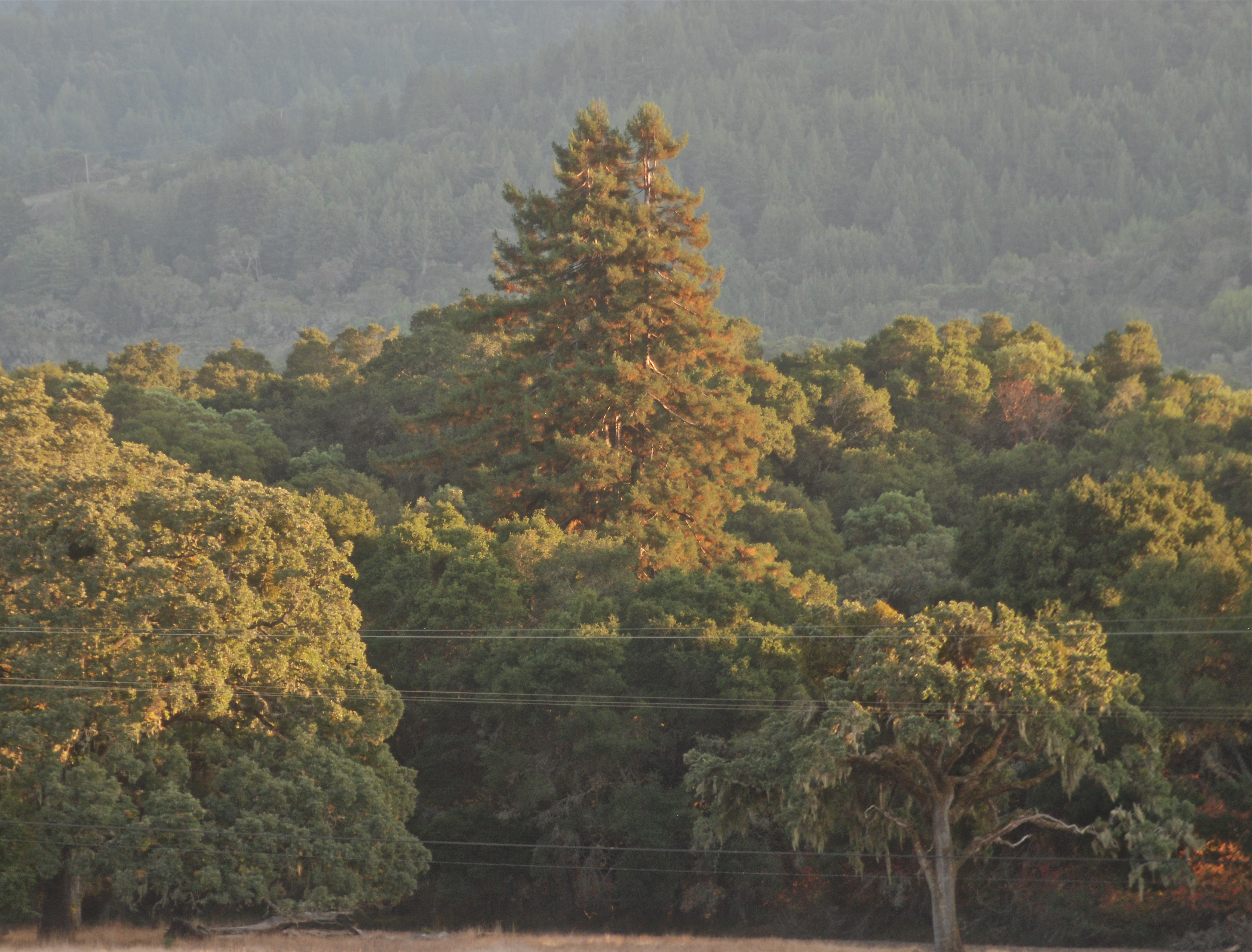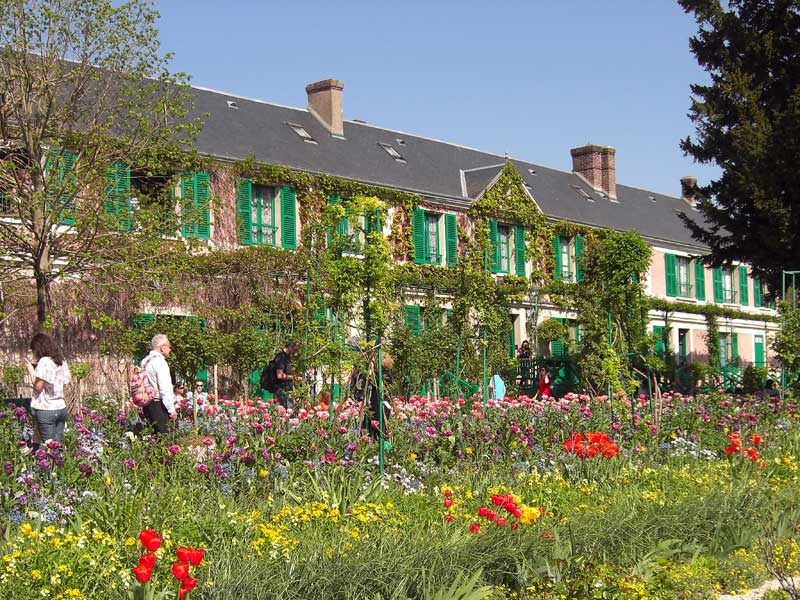|
Garden Tourism
Garden tourism is a type of niche tourism involving visits to famous gardens and botanical gardens and places which are significant in the history of gardening. Garden tourists often travel individually in countries with which they are familiar but often prefer to join organized garden tours in countries where they might experience difficulties with language, travel or finding accommodation in the vicinity of the garden. In the year 2000 the Alhambra and the Taj Mahal both received over two million visitors. This poses problems for the landscape manager. Probably the oldest traditions of garden tourism are those of China and Japan. In both countries some temples had famous gardens, and in China a private garden could be visited for a small charge by the 11th century. In India, many Mughal gardens around tombs and mosques could be visited, and throughout the Islamic world some gardens were in effect public parks, open to the public, while others remained strictly private. In Earl ... [...More Info...] [...Related Items...] OR: [Wikipedia] [Google] [Baidu] |
National Gardens Scheme
The National Garden Scheme opens privately owned gardens in England, Northern Ireland, Wales, and the Channel Islands on selected dates for charity. It was founded in 1927 with the aim of "opening gardens of quality, character and interest to the public for charity". The scheme has raised over £60 million since it began, and normally opens thousands of gardens a year."Yellow Book" (2008). National Gardens Scheme. County organisers are responsible for vetting gardens to make sure they are of sufficient interest. (Features)(Homefront). ''''. 2002. Retrieved via |
Filoli
Filoli, also known as the Bourn-Roth Estate, is a country house set in of formal gardens surrounded by a estate, located in Woodside, California, about south of San Francisco, at the southern end of Crystal Springs Reservoir, on the eastern slope of the Santa Cruz Mountains. Now owned by the National Trust for Historic Preservation, Filoli is open to the public. The site is both a California Historical Landmark and listed on the National Register of Historic Places. History Bourn family Filoli was built between 1915 and 1917 for William Bowers Bourn II, owner of one of California's richest gold mines and president of Spring Valley Water Company, supplying San Francisco's water, and his wife, Agnes Moody Bourn. They wanted a country estate nearer to their home in San Francisco.McDermott 1984:30. The principal designer, San Francisco architect Willis Polk, used a free Georgian style that incorporated the tiled roofs characteristic of California. Polk had previously designed ... [...More Info...] [...Related Items...] OR: [Wikipedia] [Google] [Baidu] |
Longwood Gardens
Longwood Gardens is a botanical garden that consists of over 1,077 acres (436 hectares; 4.36 km2) of gardens, woodlands, and meadows in Kennett Square, Pennsylvania, United States in the Brandywine Creek Valley. It is one of the premier horticultural display gardens in the United States and is open to visitors year-round to enjoy native and exotic plants and horticulture (both indoor and outdoor), events and performances, seasonal and themed attractions, as well as educational lectures, courses, and workshops. History Longwood Gardens has a long varied history. For thousands of years, the native Lenni Lenape tribe fished its streams, hunted its forests, and planted its fields. Evidence of the tribe's existence is found in quartz spear points that have been discovered on and around the property and can be found on display in the Peirce-du Pont House on the Longwood Gardens property. In 1700, a Quaker farmer named George Peirce purchased 402 acres of this English-claimed l ... [...More Info...] [...Related Items...] OR: [Wikipedia] [Google] [Baidu] |
Alhambra
The Alhambra (, ; ar, الْحَمْرَاء, Al-Ḥamrāʾ, , ) is a palace and fortress complex located in Granada, Andalusia, Spain. It is one of the most famous monuments of Islamic architecture and one of the best-preserved palaces of the historic Islamic world, in addition to containing notable examples of Spanish Renaissance architecture. The complex was begun in 1238 by Muhammad I Ibn al-Ahmar, the first Nasrid emir and founder of the Emirate of Granada, the last Muslim state of Al-Andalus. It was built on the Sabika hill, an outcrop of the Sierra Nevada which had been the site of earlier fortresses and of the 11th-century palace of Samuel ibn Naghrillah. Later Nasrid rulers continuously modified the site. The most significant construction campaigns, which gave the royal palaces much of their definitive character, took place in the 14th century during the reigns of Yusuf I and Muhammad V. After the conclusion of the Christian Reconquista in 1492, the site became th ... [...More Info...] [...Related Items...] OR: [Wikipedia] [Google] [Baidu] |
Villa Lante
Villa Lante is a Mannerism, Mannerist garden of surprise in Bagnaia, Viterbo, Bagnaia, Viterbo, central Italy, attributed to Jacopo Barozzi da Vignola. Villa Lante did not become so known until it passed to Ippolito Lante Montefeltro della Rovere, Bomarzo, Duke of Bomarzo, in the 17th century, when it was already 100 years old. The Villa, a property of the Republic of Italy, since December 2014's run by the Polo Museale del Lazio. Architectural design The Villa Lante is formed by two ''casini'' (houses), nearly identical but built by different owners in a period separated by 30 years. Each square building has a ground floor of rusticated arcades or loggias which support a piano nobile above. Each facade on this floor has just three windows, alternating round or pointed pediments. Each window is divided by pilasters in pairs. An upper floor is merely hinted at by small rectangular, mezzanine type, windows above those of the piano nobile. Each casino is then crowned by a roof lan ... [...More Info...] [...Related Items...] OR: [Wikipedia] [Google] [Baidu] |
Villa D'Este
The Villa d'Este is a 16th-century villa in Tivoli, near Rome, famous for its terraced hillside Italian Renaissance garden and especially for its profusion of fountains. It is now an Italian state museum, and is listed as a UNESCO World Heritage Site. History The Villa was commissioned by Cardinal Ippolito II d'Este (1509–1572), second son of Alfonso I d'Este, the Duke of Ferrara and grandson of Pope Alexander VI through his mother Lucrezia Borgia. The Este family had been lords of Ferrara since 1393, and were famous as patrons of the arts and of the humanist scholars of the Renaissance. As a second son, Ippolito was destined for a career in the church; he was named archbishop of Milan when he was only ten years old. At the age of 27, he was sent to the French court, where he became an advisor to the French King, Francis I, and in 1540 became a member of the King's Private Council. At the age of thirty, at the request of the King, Pope Paul III made d'Este a cardinal. Thanks ... [...More Info...] [...Related Items...] OR: [Wikipedia] [Google] [Baidu] |
Mainau
Mainau also referred to as Mav(e)no(w), Maienowe (in 1242), Maienow (in 1357), Maienau, Mainowe (in 1394) and Mainaw (in 1580) is an island in Lake Constance (on the Southern shore of the Überlinger See near the city of Konstanz, Baden-Württemberg, Germany). It is maintained as a garden island and a model of excellent environmental practices. Administratively, the island has been a part of Konstanz since December 1, 1971, when the municipality of Litzelstetten, of which Mainau was part, was incorporated into Konstanz. Mainau is still part of Litzelstetten, now one of 15 wards (administrative subdivisions) of Konstanz. The island belongs to the Lennart Bernadotte-Stiftung (eng. The Lennart Bernadotte Foundation), an entity created by Prince Lennart Bernadotte, Count of Wisborg, originally a Prince of Sweden and Duke of Småland. It is one of the main tourist attractions of Lake Constance. Beside flowers there is a park landscape with views on the lake. There is a greenhouse ... [...More Info...] [...Related Items...] OR: [Wikipedia] [Google] [Baidu] |
Keukenhof
Keukenhof (English: "Kitchen garden"; ), also known as the Garden of Europe, is one of the world's largest flower gardens, situated in the municipality of Lisse, in the Netherlands. According to the official website, Keukenhof Park covers an area of and approximately 7 million flower bulbs are planted in the gardens annually. Keukenhof is widely known for its tulips, and it also features numerous other flowers, including hyacinths, daffodils, lilies, roses, carnations and irises. Keukenhof is located in the province of South Holland, south of Haarlem and southwest of Amsterdam in the area called the "Dune and Bulb Region" (Duin- en Bollenstreek). It is accessible by bus from Haarlem and Leiden train stations as well as Schiphol. Though its grounds are open year-round for private affairs and festivals, Keukenhof is only open to the general public for a world-renowned 8 week tulip display from mid-March to mid-May, with peak viewing arriving near mid-April, depending on growing sea ... [...More Info...] [...Related Items...] OR: [Wikipedia] [Google] [Baidu] |
Château Du Rivau
The Château du Rivau is a castle-palace in Lémeré (Indre-et-Loire), in the Touraine region, France. In Rabelais' ''Gargantua'', it was given to captain Tolmere as a reward for his victories in the Picrocholean Wars. In 1429, towards the end of the Hundred Years' War, Joan of Arc and her followers came to fetch horses at Le Rivau. It was already renowned for the quality of its equipage and war horses who were raised here. In 1510, François de Beauvau, captain of King Francis I of France, constructed the stables in the outbuildings' courtyard that supplied royal stallions. Those stables became the royal stables of Henri III and housed his stallions. An exhibit shows the history of the King's horses and tells the visitor about the mythical horses. Since 1992, the new owners have undertaken a renovation campaign to prevent the decay of the castle and winery. It has been classified as a ''monument historique'' since 1918 by the French Ministry of Culture. The castle Its shape ... [...More Info...] [...Related Items...] OR: [Wikipedia] [Google] [Baidu] |
Château De Villandry
The Château de Villandry is a grand country house located in Villandry, in the ''département'' of Indre-et-Loire, France. It is especially known for its beautiful gardens. History The lands where an ancient fortress once stood were known as ''Columbine'' until the 17th century. They were acquired in the early 16th century by Jean Le Breton, France's Controller-General for War under King Francis I, and a new château was constructed around the original 14th-century keep where King Philip II of France once met Richard I of England to discuss peace. The château remained in the Le Breton family for more than two centuries until it was acquired by the Marquis de Castellane. During the French Revolution the property was confiscated and in the early 19th century, Emperor Napoleon acquired it for his brother Jérôme Bonaparte. In 1906, Joachim Carvallo purchased the property, financed by his wife Ann Coleman, who was an heiress to the Coleman fortune. Extensive time, money, and de ... [...More Info...] [...Related Items...] OR: [Wikipedia] [Google] [Baidu] |
Giverny
Giverny () is a commune in the northern French department of Eure. INSEE The village is located on the "right bank" of the river at its confluence with the river . It lies west-northwest of , in the region of . It is best known as the location of |





.jpg)



